Вы здесь
Abdullakhan kala fortress.


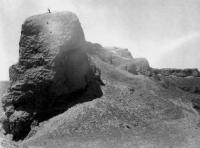
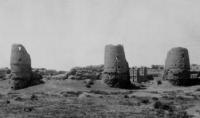
Architectural tour across ancient settlements of ancient Merv.
"Here lies Abdullah, son of Burayda"
Archaeological monuments of ancient Merv.
The mausoleum of 'Abdullah ibn Burayda is located in the Vekil Bazaar area of the Merv oasis. The structure was built towards the end of the eleventh century under Seljuk rule. It was recently restored in 1990, which fashioned its surrounding area as a namazgah.
While the restoration has been faithful to the original style of its interior, the exterior has been largely altered. Older drawings indicate that the new dome raised on a new drum stands about two meters taller than the original structure.
The ruins of Merv are comprised of five walled cities dating from the VI century BC to the XVIII century, known as Erk Kala, Gyaur Kala, Sultan Kala, Abdullah Khan Kala and Bairam Ali Khan Kala, grouped into three settlements corresponding to three periods, the ancient, medieval and post-medieval Merv.
In the three consecutive invasions of 1221 - 1222 the Mongols sacked the medieval city of Merv, the ruins now known as Sultan Kala. The present day mausoleum is a domed room oriented southeast to northwest within a rectangular enclosure with the same orientation.
The main entry to the courtyard is from the southeast, through a set of double doors marked by two small minarets at the courtyard corners. The courtyard walls and the minarets were built in 1990. The tomb is built entirely in brick, with external cladding and decoration.
While the original inscriptive plaques seen in older photographs have not survived, the new plaques from its last restoration adorn the structure. Of these, the first one is a marble inscription in Turkmen language above the courtyard gate, mentioning the name of the restorer.
The second is an Arabic inscription on a black plaque installed above the tomb entrance stating: "Here lies Abdullah, son of Burayda." Inside, the shrine is illuminated with three screened windows on the walls and ten windows pierced into the drum of the dome.
Shallow squinches provide the transition from the square base to the circular drum, which is inset from the square walls of the tomb on the exterior. The interior is plastered in white in the upper sections where stylized stucco inscriptions can be seen on window arches at the base of the dome.
There are no sarcophagi in the tomb. The city remained occupied, an impoverished shadow of the former eastern Seljuk capital until the Timurids integrated the area into their empire in the late fourteenth century.
Shahrukh (1405 - 1447) considered locating his capital here and founded a new settlement, now known as the Abdullah Khan Kala, a kilometer south of Sultan Kala. He instituted a major building program, rebuilt the irrigation system, and is credited with construction of the dam.
Construction came to a halt however when Shah Rukh relocated to Samarkand, and Merv did not develop again until the Shaybanis reign (1500-98) under whom the fortification walls were erected. In the post-medieval period Merv remained a provincial center, a small town of less than a square kilometer boasting, however, one of the strongest fortresses of the time.
A mosque, madrasa and reservoir were situated in the center of the northern section, with a citadel in the north corner. A rectangular extension known as Bairam Ali Khan Kala was constructed to the west of Abdullah Khan Kala in the eighteenth century.
These two sites were probably in use until the early nineteenth century. No longer occupied by the time of the Russian's arrival in 1885, many of the buildings had been dismantled to provide bricks for new construction.
Genhis Khan’s youngest son Toloi arrived at the head of an army in January 1221, and spent six days preparing to besiege the city with terrifying catapults and bettering rams. This was merely a phase of psychological tenderizing – and it worked.
On the seventh day, just as Toloi gave the order to attack, Merv’s governor surrendered on the understanding that his people would be spared. As they evacuated the city they were slain. Each Mongol soldier had orders to behead between 300 and 400 inhabitants.
From half a million and a million of them died in the initial massacre.
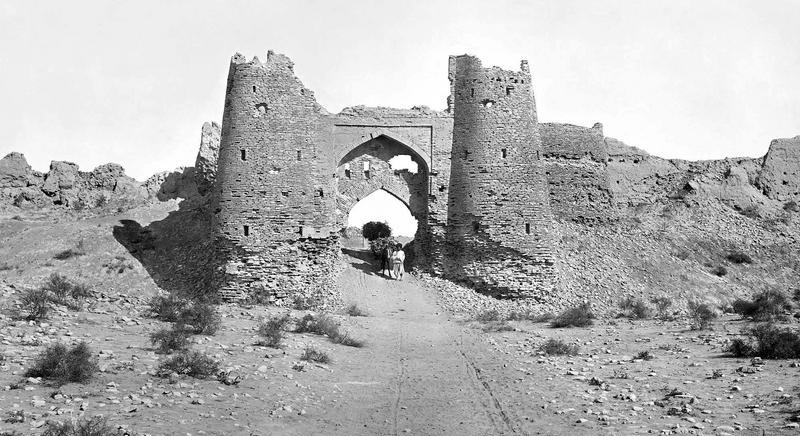
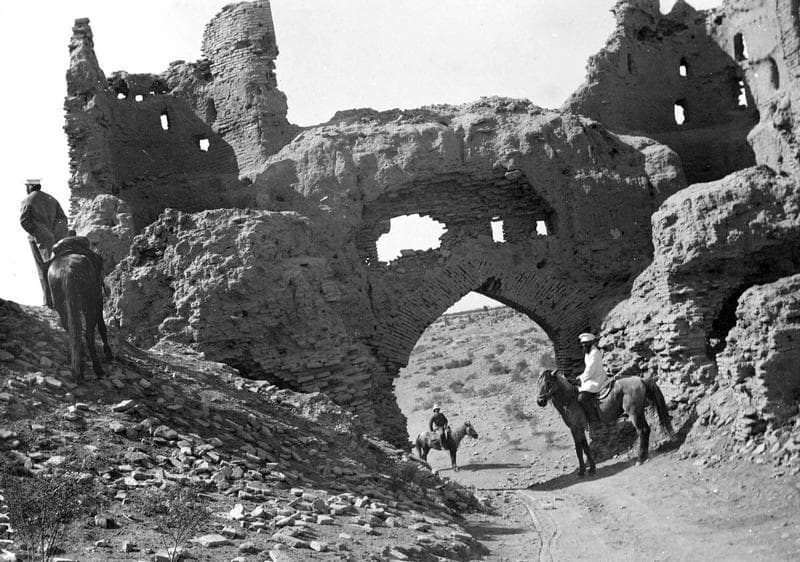
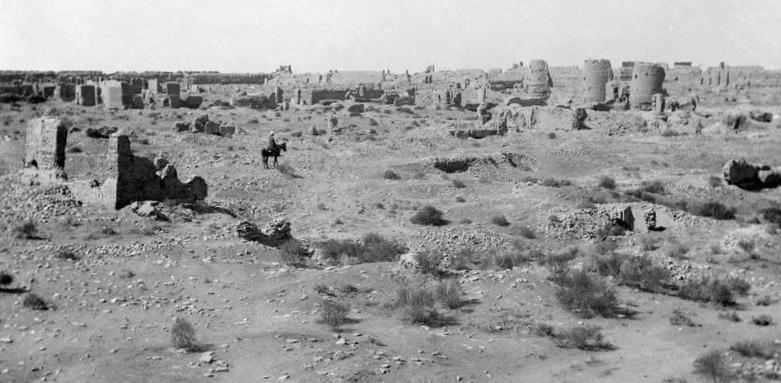
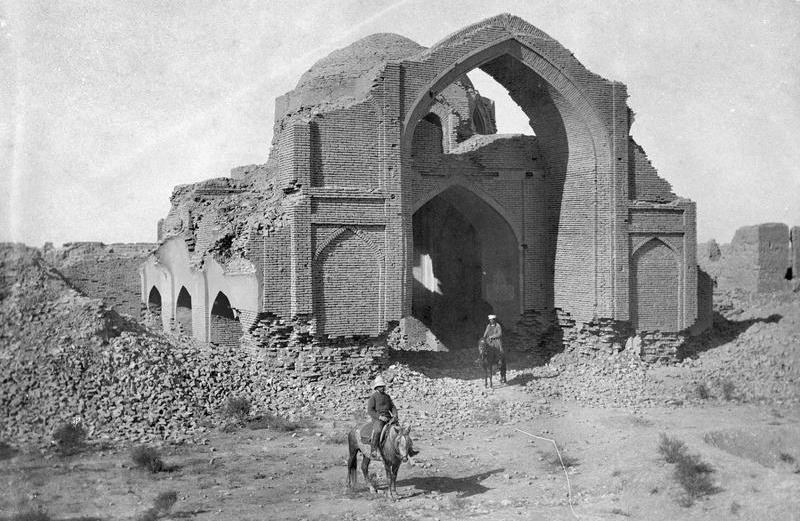
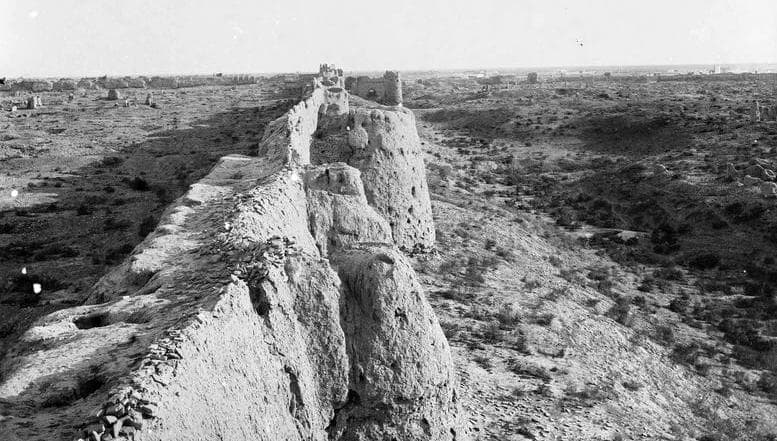
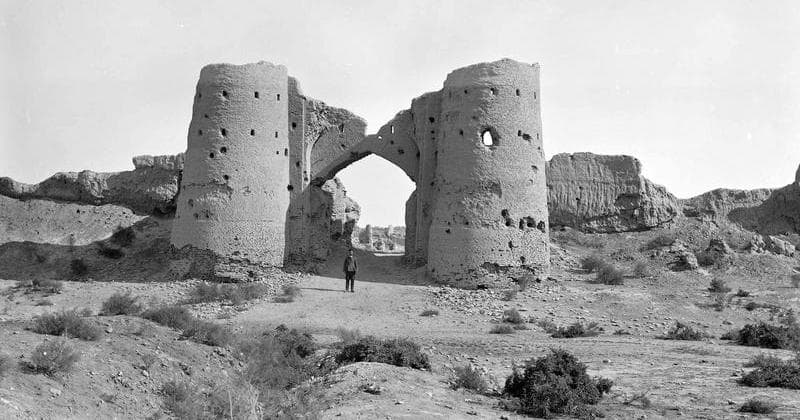
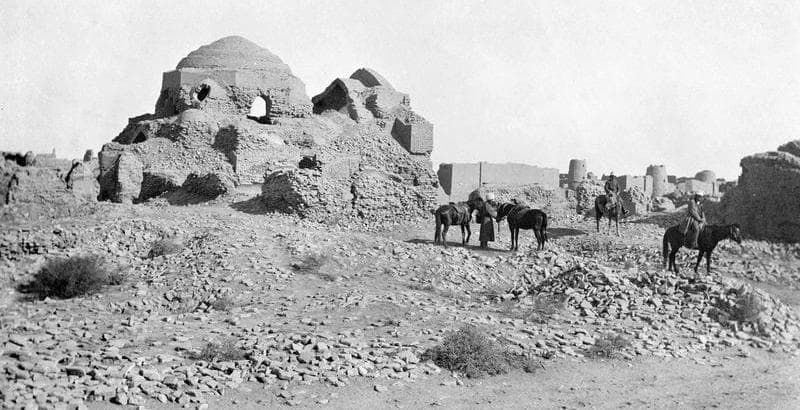

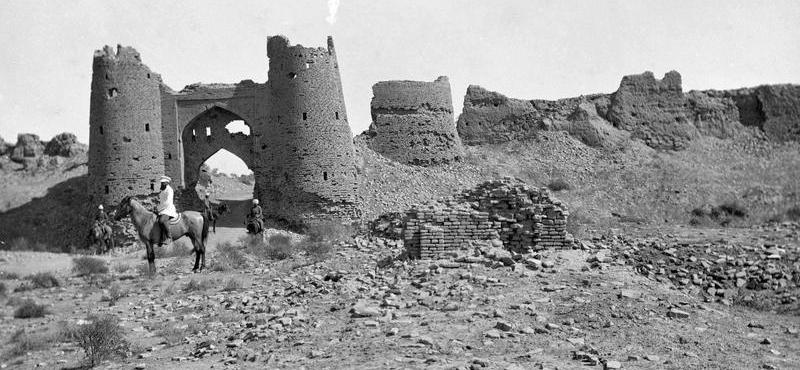
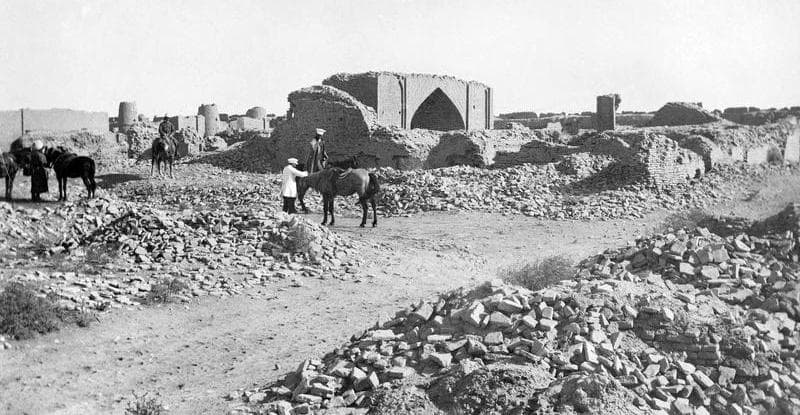
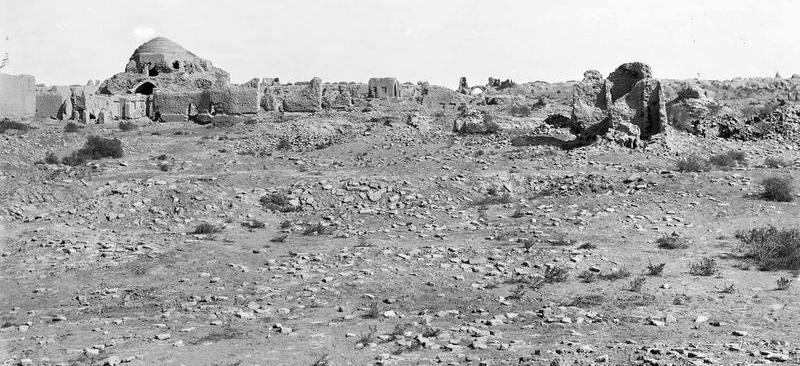
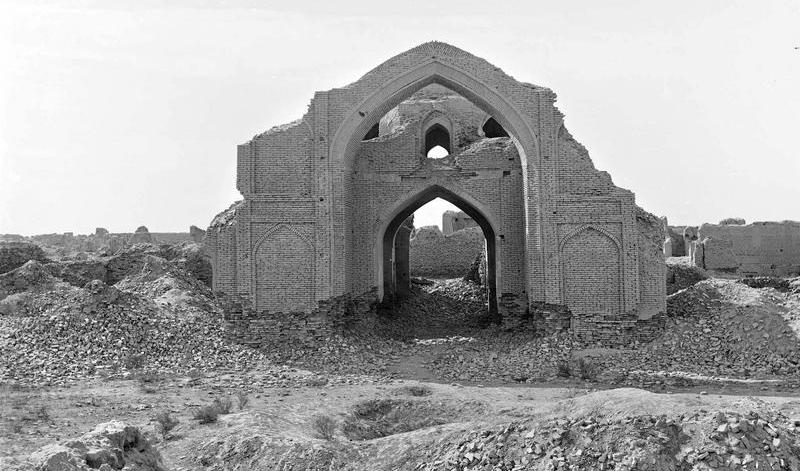
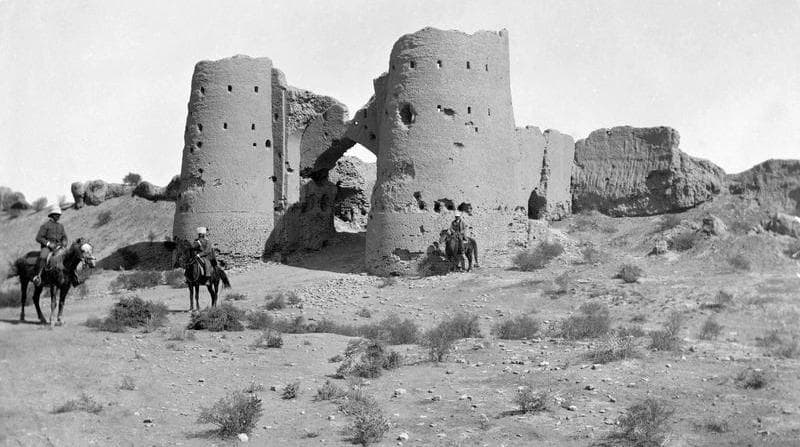

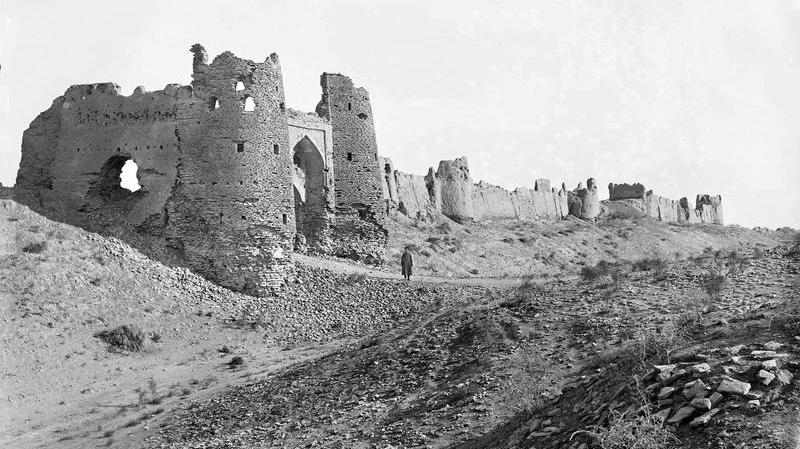
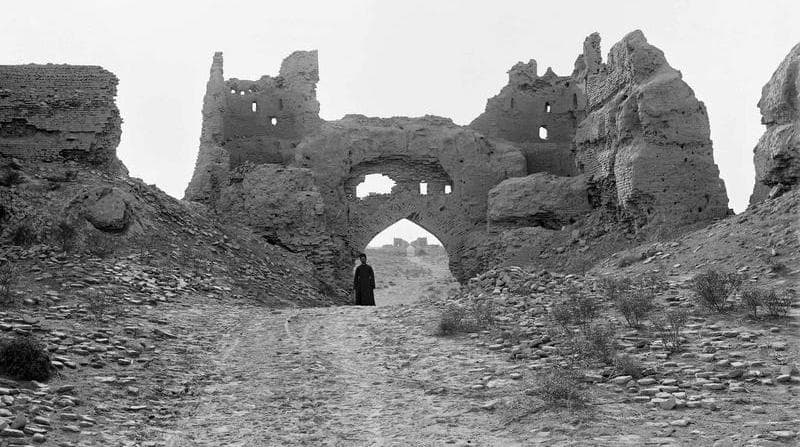
Authority:
Bernshtam A.N. «History-archeologic sketches Central Tien-Shan and Pamir-Alay». « Religious and spiritual monuments of the Central Asia». Sayan, Yüksel. 1999. Türkmenistan'daki Mimari Eserler (XI-XVI Yüzyil). Ankara: Kültür Bakanligi Yayinlari, 115 - 117, 405 - 410.







